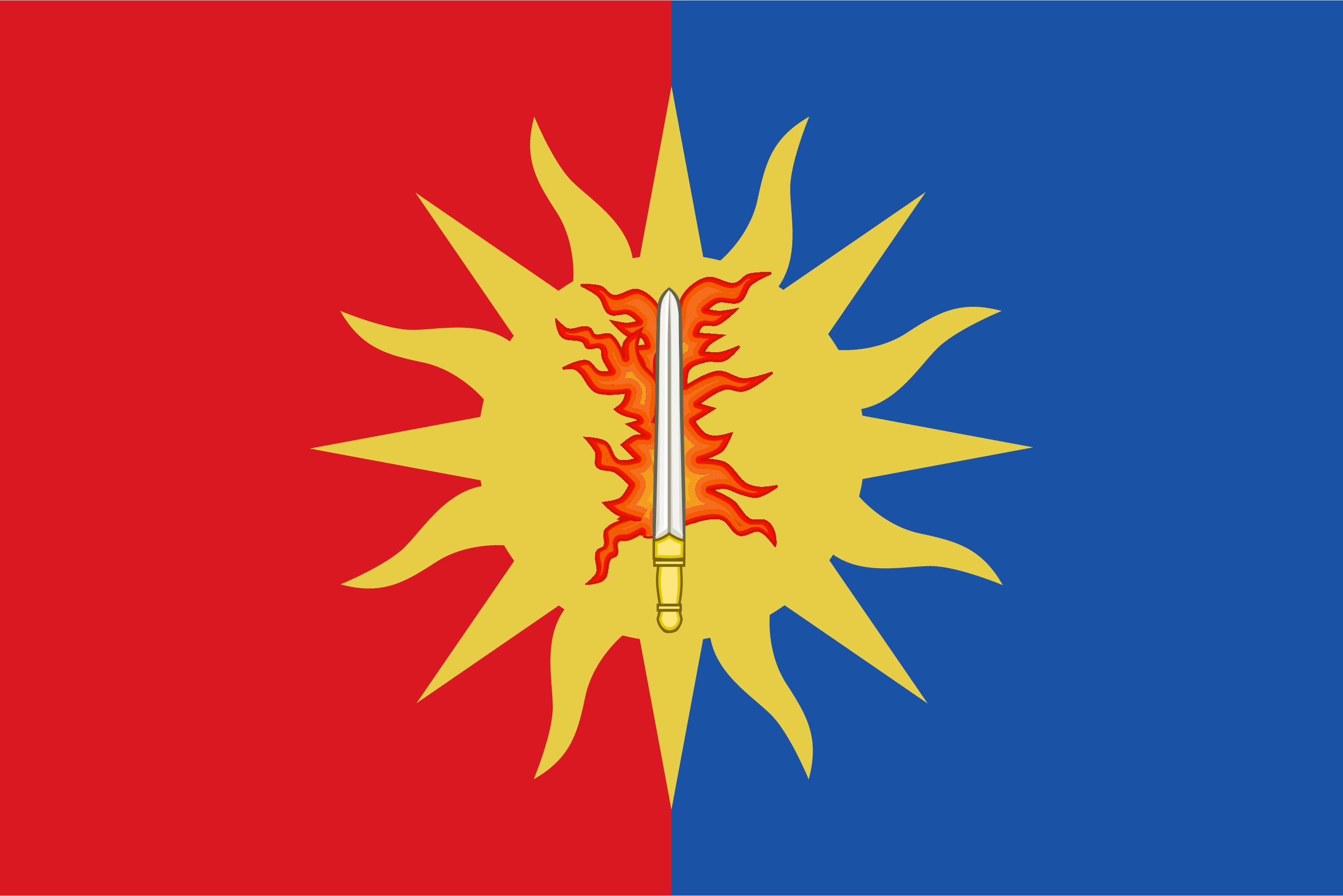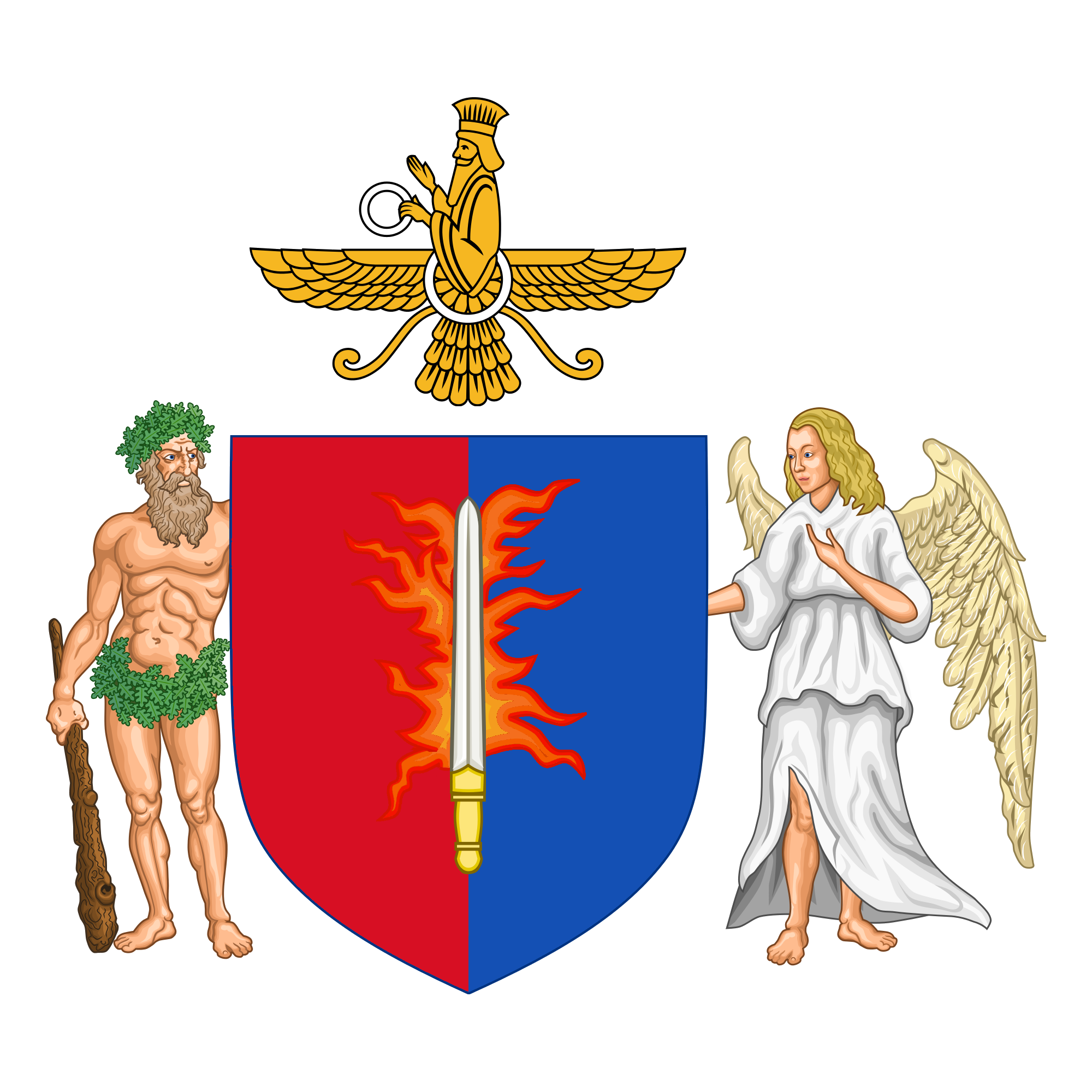State of Modan

|
|
| Feudal Status: | Imperial State |
| Capital: | Modan Hamlet |
| Largest Cities: | Acarid City, Drakorda, Karamola, Mortis Mercatoria, Nee, Nordagaat |
|
| |
| Local Leadership Title: | Prince of Modan |
| Local Government: | Coordinated State |
| Current leader: | Dâniyal Simrani-Kalirion |
|
| |
| Local language: | Praeta, Istvanistani |
| Local Religion: | Holodomatic Cedrozurvanism, Cedrism |
Successor state to Malarboria following the Convention of Drakorda in 1662 which saw the Coven of the Sun and Loyalist Legion capitulate to the Army of the Southern League and local rebel forces in a formal ceremony culminating in the surrender of the Sword of Fire to Daniyal ibn Daniyal Simrani-Kalirion in return for the guarantee of safe-passage for Kizzy Drakland, her daughter, and her daemonic familiars, on their way to an overseas exile.
Modan comprises of twelve governorates and two quasi autonomous states grouped in three administrative circuits. The years following its foundation were focused heavily on reconstruction following the debilitating loss of the regions post-human population to various causes, precipitating a collapse in the tax base of the territories inherited by the state. Those who survived the seventy-two year period of rule by the undead and daemonically-possessed were left devastated, demoralised, dissatisfied, and in many instances materially impoverished, leaving the way open for the arrival of the Army of the Southern League and the rise of Humanism in the region.
The Khanist regime established by the first Prince of Modan looks to inherit the technologies of the myriad of fallen regimes in its new area of operation whilst, in accordance with the top-level down imprint of ideological conditioning, less than cordially despising the vanished creators of the very same lore which they now seek to acquire.
After the abolition of the imperial states, the State of Modan was succeeded by the Duchy of Modan & Malarboria.
Timeline
- 1640-1644: Harvestfall Revolution in Minarboria draws attention to the deteriorating phylacteric field sustaining Liches (Revenants) in Lichbrook. Paralysis and disintegrations increase year on year by an order of magnitude.
- After the failure of the Lich-Queens could no longer be denied, Lichbrook was administered in their name by the Crown Council, established in the year 1644 by Decree of the Nobles of the Realm sealed by the Kaiser. The Council operated on the principle of the round table with the Countess of Amarr representing the Undead and The Dirigent of Musica representing the Living.
- 01.XII.1644: Underkeep Massacre shatters residual faith in Imperial Government. Deep Singer Mass Emigration to the unknown and subterranean portions of the West. Minority comprised of Biological Containment Corps and the Lifemesher and Wayfarer clades form an underground, in every sense, anti-human resistance movement in Shimmerspring.
- 1648: Final collapse of the phylacteric field. Virtually all Liches disintegrate over the course of the year. Surviving revenants scarcely number above tripple digits. The loss of Liches and Deep-Singers within the same decade causes the population of Southern Benacia to be effectively halved.
- 1649–1651: Failure of the Crown Council sees Lichbrook demoted to Imperial Dominion. The Countess of Amarr stages an unsuccessful revolt. The ensuing Struggle for the South sees the State of Malarboria formed by Imperial interventions amidst the ruins of Lichbrook and Eastern Minarboria.
- 1651: Auspicious Occasion sees Elwynn purged of Vanic population and its peripheral territories dismembered. Most of Angularis is passed to Malarboria.
- 1651-1660: Reconstruction in Malarboria is hampered by poor relations between the Daemonically influenced “Coven of the Sun” and the Imperial Government. The War of Lost Brothers (1653–1657) sees scarce capital resources diverted to sustaining the increasingly unpopular war effort.
- 1660: The Loyalist Legion, the mass participation party established to give the Coven of the Sun a vehicle for participation in imperial-level politics, suffers a humiliating defeat in the Folksraad election of that year to a coalition of humanist, separatist, and minority ethnic parties grouped together under the 'Coalition 1660' banner. The election signalled widespread and increasing dissatisfaction with the regime of the Daemon-Queen amongst denizens (free subjects of the state without Imperial citizenship).
- 1661: The Nationalist and Humanist Party lends its support to an uprising by Coalition 1660 activists by staging two simultaneous invasions; first consisting of Elwynnese rebels from the Army of the Southern League attacking via Angularis and Highpass, and secondly by an amphibious landing of troops from the islands of Jadid Khaz Modan in Amarr.
- 11.X.1662: Convention of Drakorda permits Kizzy Drakland, her daughter, and her daemonic familiars to evacuate from the country of what was now proclaimed as Modan, in return for surrendering the Sword of Fire to Daniyal ibn Daniyal Simrani-Kalirion.
- 07.XII.1662: Constitution of Drakorda is promulgated. Daniyal Simrani-Kalirion proclaimed Prince of Modan. State of Modan established.
- 10.XIII.1662: The State of Lywall, a protectorate established in the former Minarborian Empire, along with the islands of Amity, Miriroth, and So-Sara, are formally ceded by the Imperial Government to the State of Modan. Yardistan meanwhile is ceded to Brookshire.
Government
Relations with Coalition 1660
| Coalition 1660 Manifesto Points | Government Delivery Score | Maximum Score |
| The eradication of Daemons. | 8 | 10 |
| The surrender of Kizzy Drakland, the Sibyls, and all known or suspected members of the Coven of the Sun to face local justice. | 5 | 10 |
| Abolition of the Monarchy at the State level. | 4 | 10 |
| The reform of the present Imperial State, replacing the tyrannical Dominion of Malarboria with the Mercatorian Commonwealth under a Republican constitution. | 6 | 10 |
| Taking Amarr Oil (an ESB Group company) into public ownership. | 0 | 10 |
| A reduction of Imperial taxation. | 0 | 10 |
| Liberalisation of interstate trading regulations. | 0 | 10 |
| Standardisation of railway gauges within the present Imperial State. | 0 | 10 |
| Investment for three international airports (Acarid City, Fatehpur Sikri, & Modan Hamlet). | 0 | 10 |
| Support to the Republic of Inner Benacia in its confrontation with Kasterburg. | 0 | 10 |
| Constitutional guarantees for the rights and liberties of Florencan, Iridian, Lach, Lakhesian and Tellian minorities. | 0 | 10 |
| An edict of religious toleration. | 0 | 10 |
| A decree protecting property owners against land claims by Revenants. | 0 | 10 |
| The establishment of a professional and full-time home defence force supported by a volunteer militia. | 7 | 10 |
| The appointment of Lieutenants to be undertaken by the Kaiser and Steward only on the basis of recommendations made by the local government. | 0 | 10 |
| Lieutenants to be local officials with family connections to the lieutenancy to which they have been appointed and to have ten years of public service prior to their appointment. | 0 | 10 |
| No criminals or drunks to serve in the Imperial Constabulary, particularly the Imperial Marshals. | 0 | 10 |
| Abuses of office to be investigated openly and fairly. | 0 | 10 |
| Extrajudicial killings by agents of the Imperial Government, especially the Chamber of the Crypteia, to be fully investigated. | 0 | 10 |
| Discrimination by Imperialists against the Lach community to be investigated and atoned for. | 0 | 10 |
| A formal summit meeting between the Imperial Republic and the Tellian Confederation where the Imperial Government will: | - | - |
| Apologise to the Tellian Confederation for violations of treaty during the reign of Kaiseress Noor. | 0 | 10 |
| Undertake the necessary actions to fully adhere to the provisions of the treaty establishing the Mandate of Tellia. | 10 | 10 |
| Total Score: | 40 | 220 |
| Pass mark is 115 | ||
(WiP)
Development themes
Bit of a scribble pad:
- Portal technology
- Bio-mechanical engineering
- Genetic manipulation
- Panopticon
- Digital storage and transfer of human consciousness
- Influences of the "celestial sphere" in contrast to the "chthonic" / maybe equally as daemonic as the regime it replaced?
- Briefly known as Archonic Technocracy of Modan

